Making dumpling wrappers at home is easier than you may think. All you need is good old all-purpose flour, salt and water. The result is tender and chewy wrappers that are easy to work with.
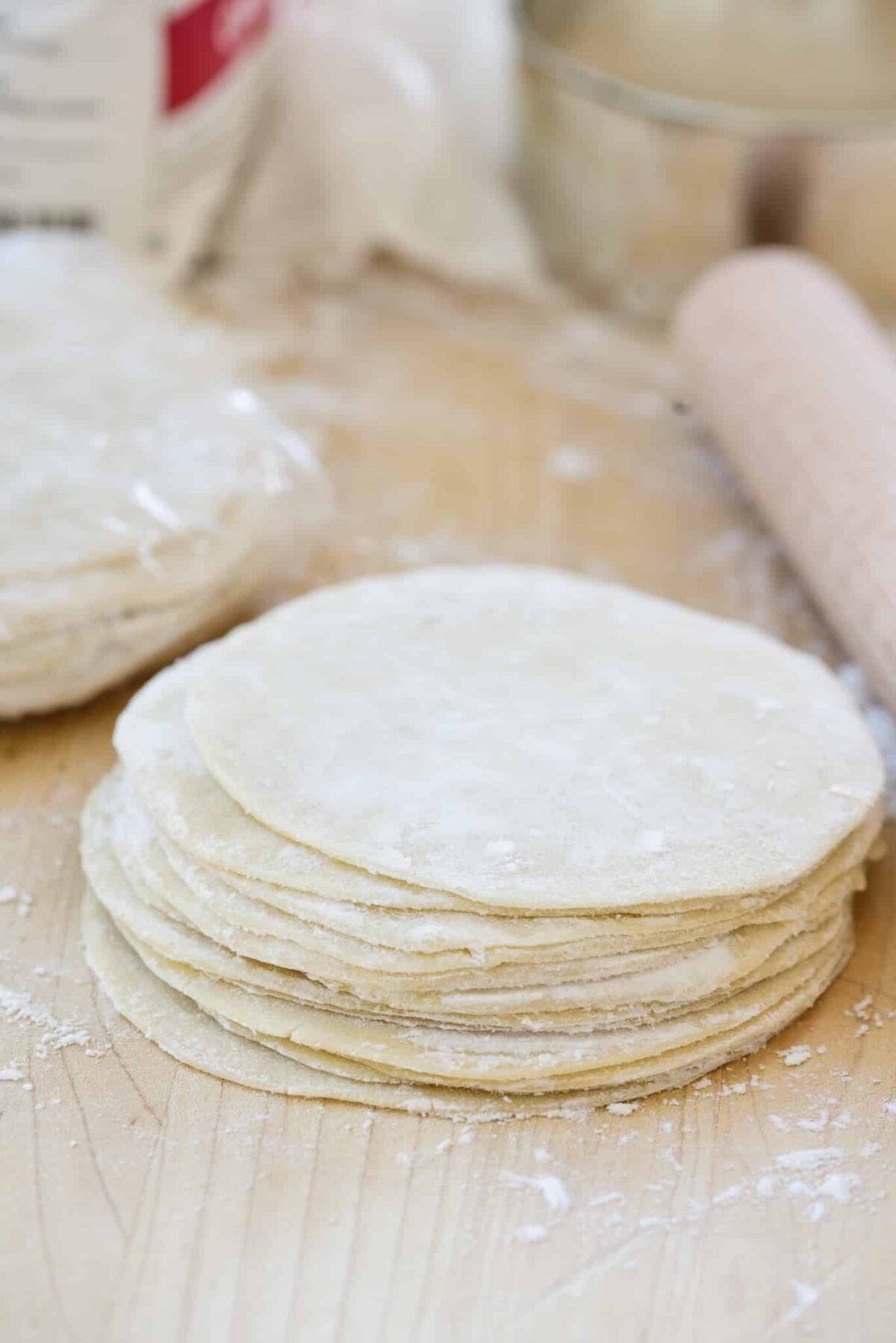

I’ve made countless dumplings (mandu, 만두) over the years. I sometimes use store-bought wrappers (mandupi, 만두피) to save time and effort. But, I really love making dumplings with homemade dumpling wrappers. It obviously involves some work, but totally worth it! Freshly made dumpling wrappers are softer, chewier and more durable to work with and do not easily tear. They also taste much better.
Making your own dumpling wrappers also means that you have total control over the size and thickness. It’s also so much easier to shape dumplings any way you want. Some of the common Korean dumpling types, such as kimchi manduare made with a substantial filling with quite a few ingredients — vegetables, tofu, meat and, sometimes, starch noodles (dangmyeon, 당면). Homemade wrappers are perfect for them.
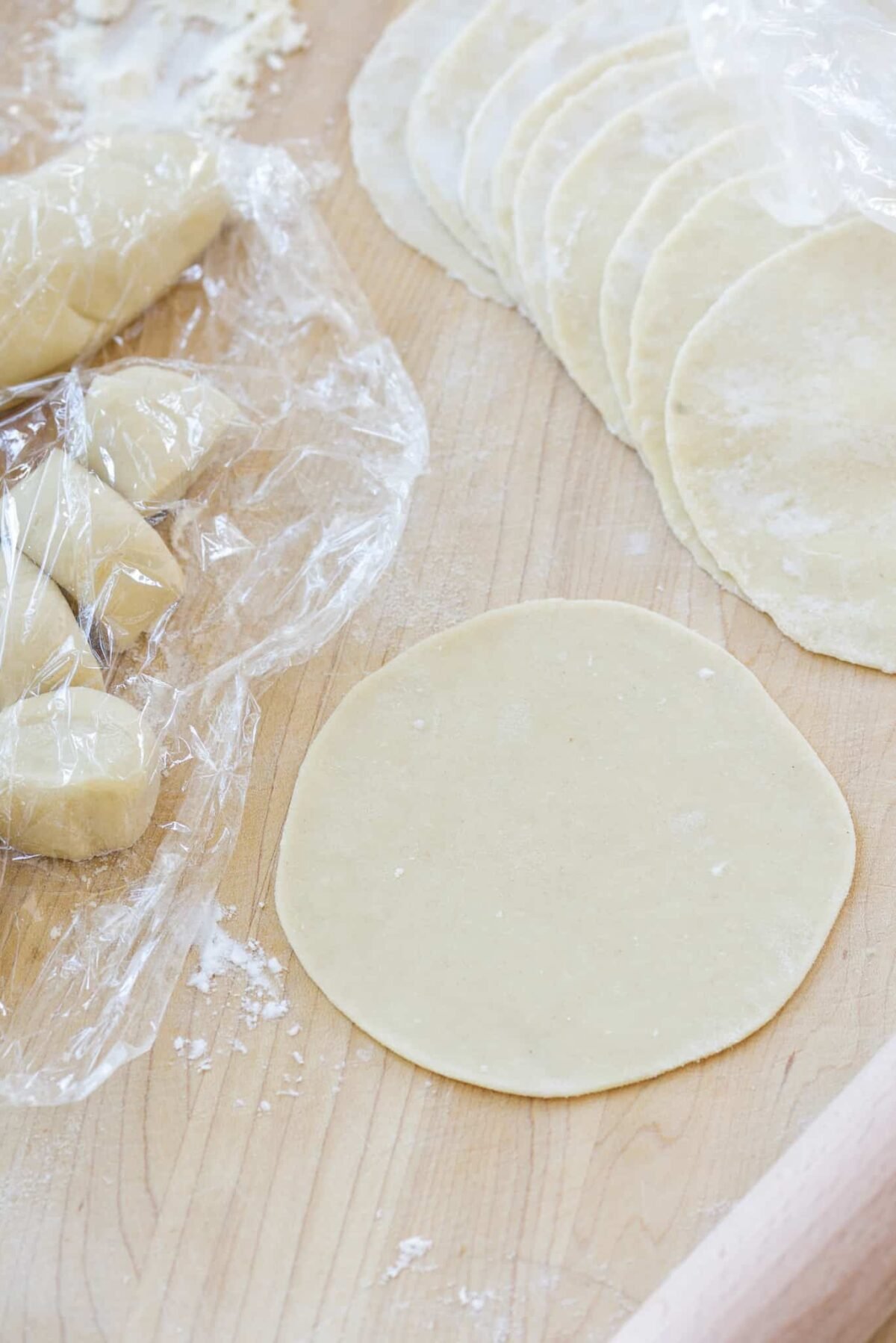

How to make dumpling wrappers
Flour
I use unbleached, all-purpose flour. Depending on the flour and how it’s measured, 1 cup of all-purpose flour can weigh quite differently. My 1 cup usually weighs around 140 grams. However, don’t worry about the exact weight measurement if you don’t have a scale. For dumpling dough, you can always adjust it by adding a little more water or flour, whichever is necessary, to make the dough soft enough to be pliable but not too soft.
All-purpose flour is called joong-lyuk-boon (중력분), if you’re buying a Korean brand.
Hot water vs. cold water
Hot water partially inhibits gluten development by denaturing the proteins in flour. It also cooks (or gelatinizes) the starch. The result is the dough that has more water content but not as elastic as cold water dough. The higher water content helps dumpling skins remain tender after being cooked. As a result, it’s good for steaming or pan-frying in which the dumplings won’t absorb much water as they cook. Less gluten means the dough is not as elastic so it’s easier to roll out.
On the other hand, cold water dough has less water and more gluten, which makes the dough elastic, tough, and strong. As a result, cold water dough is better suitable for boiled dumplings. The cold water dough will spring back slightly when you roll it out.
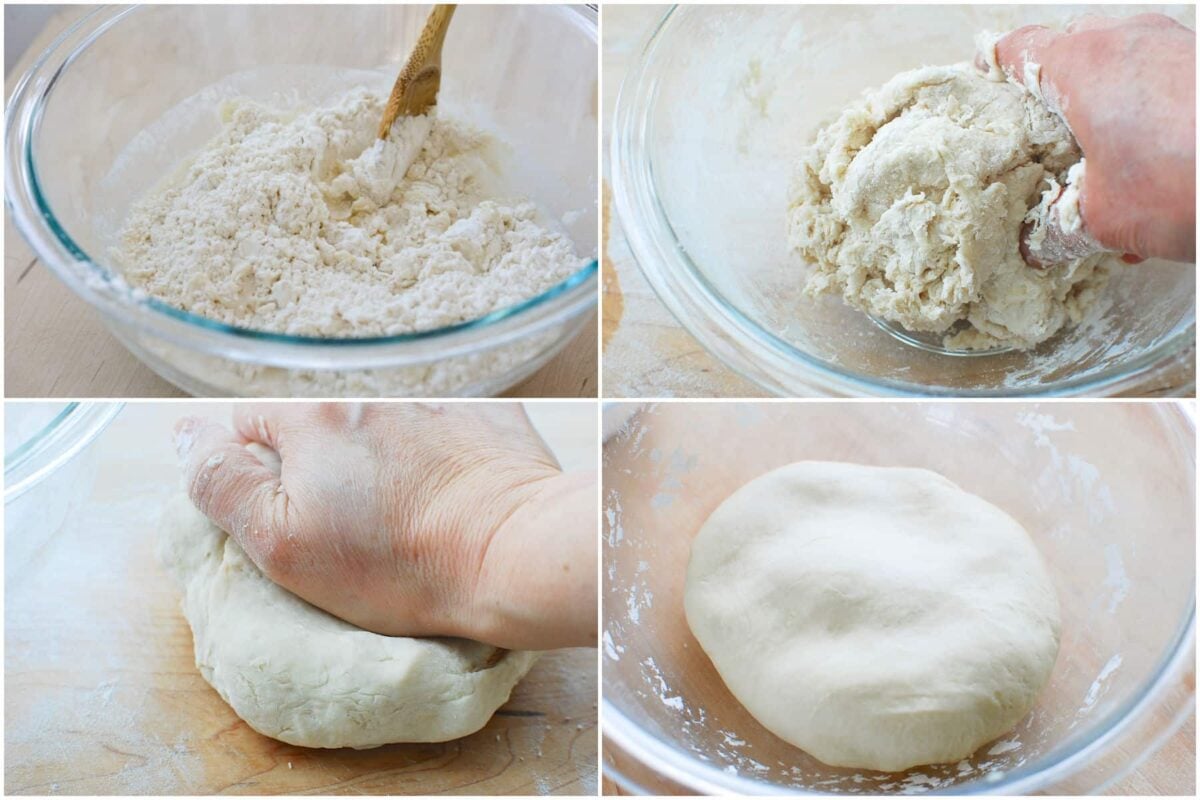

Kneading the dough
Depending on the flour, the amount of water needed can vary. So, it’s important to feel the dough and adjust the moisture level as necessary by adding a little more water or flour as necessary. Once a dough is formed, knead it for about 5 minutes. The dough should be fairly smooth but slightly stiff. It will relax after resting for about 30 minutes and become soft and pliable.
Rolling the dough
I find it more efficient to cut the dough into small one-wrapper size pieces and roll out each one. If using this first method, a small rolling pin is helpful. You don’t really have to roll the dough to a perfect round, but feel free to use a round cutter, if available, to trim it nicely.
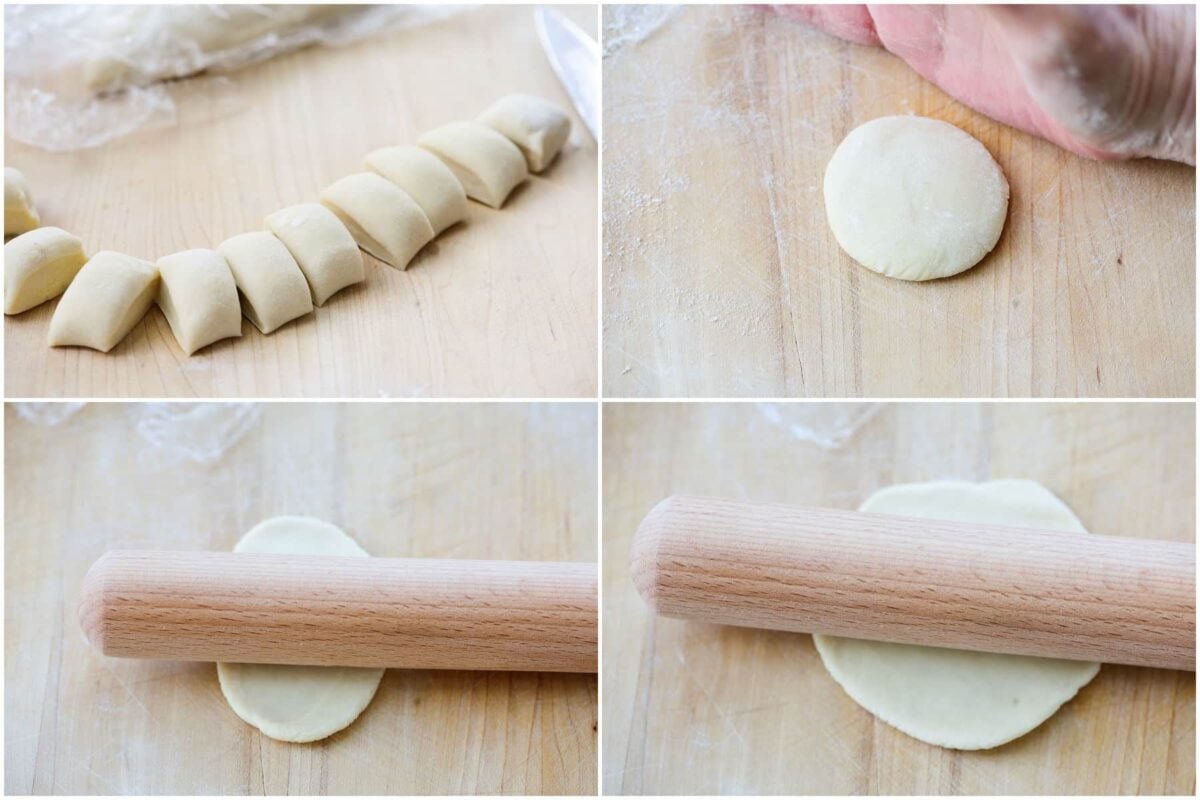

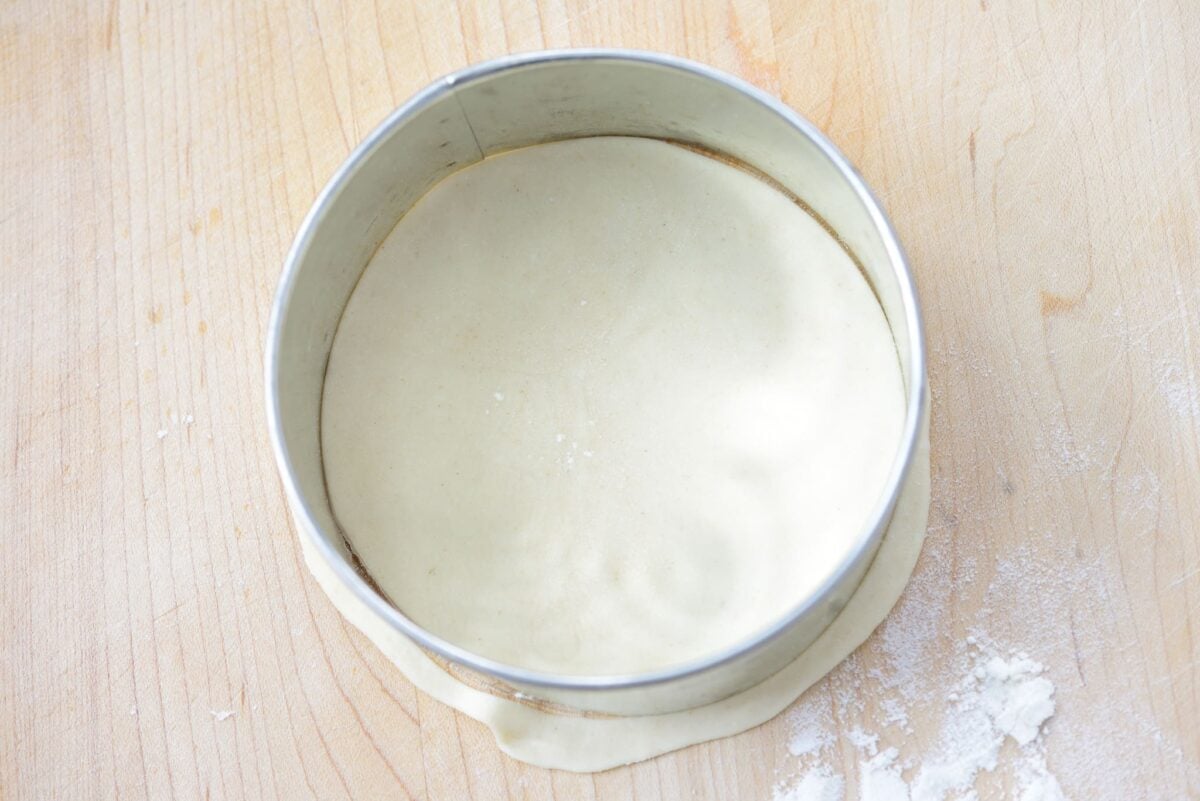

Another method is to cut the dough into two or three large pieces, roll each one out thin with a large roller, and cut out as many rounds as you can with a round cutter. You can reuse dough scraps to make more rounds. If the scraps have dried out, you can add a little bit of moisture by wetting your hands before working with them.
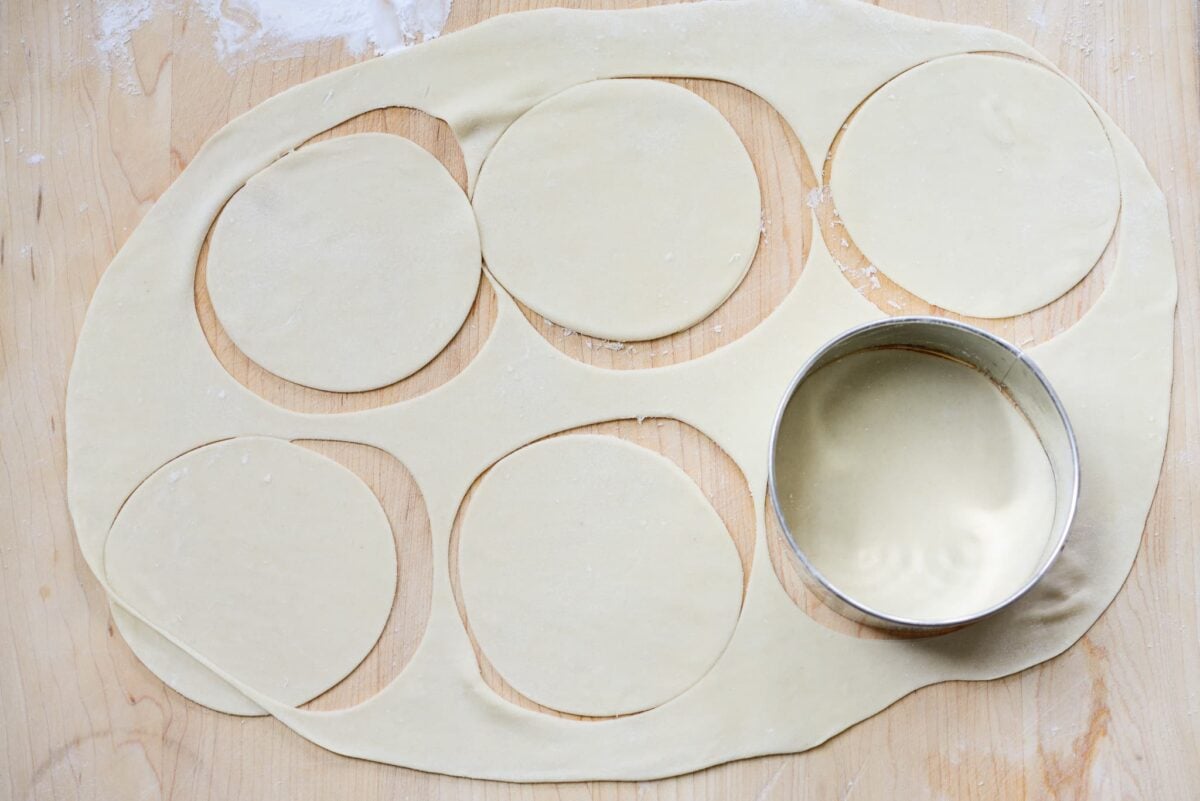

Tips for homemade dumpling wrappers
- A small rolling pin is helpful when you roll out small pieces of dough.
- Flour the surface and the dough during the process of rolling out.
- If you like the wrappers to be uniformly round, use a round cutter (cookie cutter, wine glass, etc.).
- Always cover the dough and wrappers that are not being used with a plastic wrap or a damp towel.
- It’s best to use homemade dumpling wrappers right after making them. Make a few, stuff the filling, fold, and repeat.
- If stacking the wrappers for later use, dust each wrapper generously with cornstarch or potato starch. Flour won’t work because it’ll be absorbed into the wrappers.
- For storage, double protect your dumpling wrappers by first wrapping them with a plastic wrap and then putting in a storage/freezer bag. You can keep the dough in the fridge for up to 2 days or freeze immediately for a longer storage. Bring them to room temperature before using.
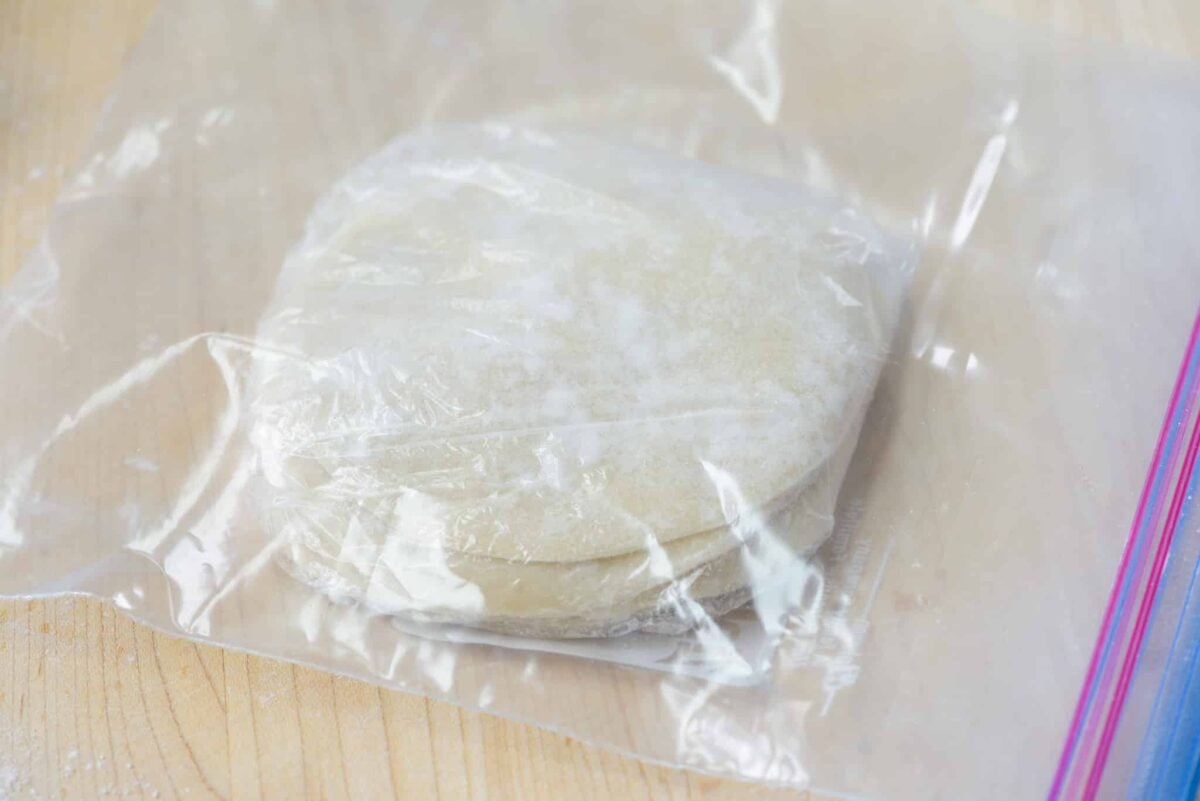

Colorful dumpling dough
You can add a natural color to your dumpling wrappers. For green dough, I use spinach or garlic chives. Beets are great for pink/red dough, and carrots for orange dough. Simply cook the vegetables, puree, and strain to make colorful liquid for the dough.
Try the same technique to make colorful homemade noodles for escape door (knife cut noodles).
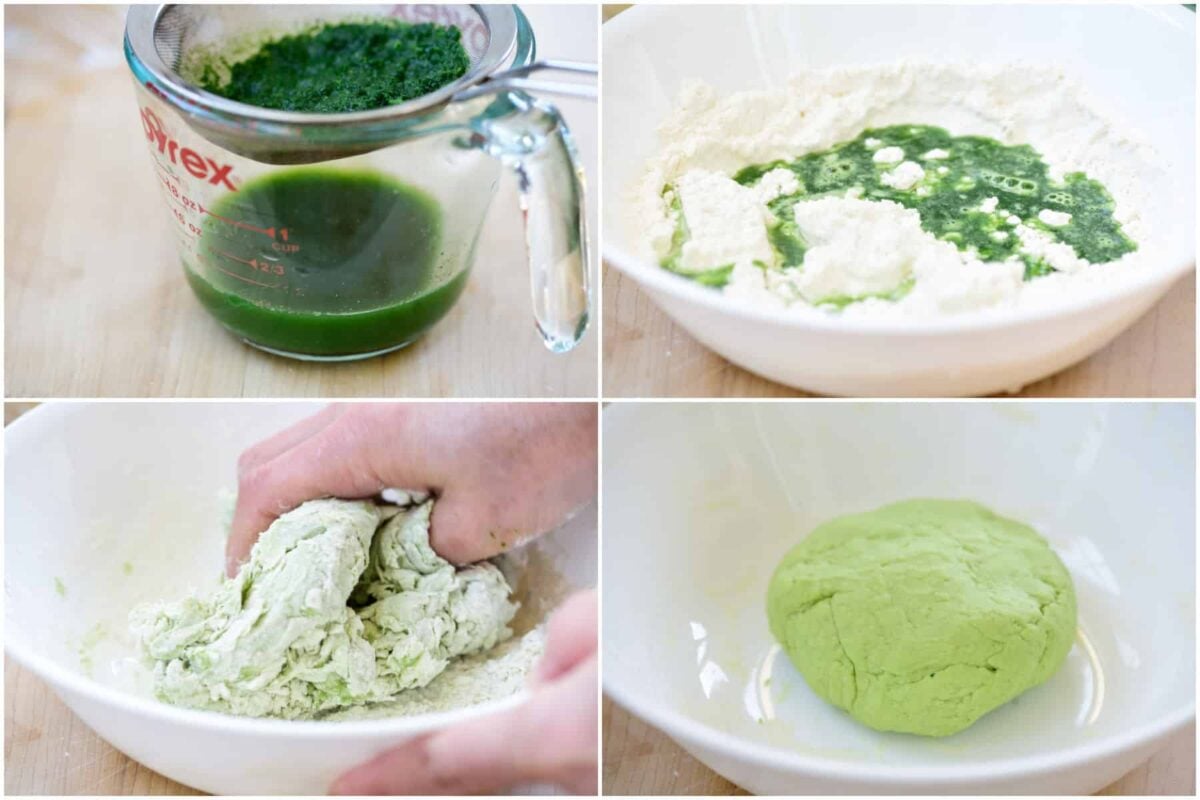

Dumpling Recipes
Dumplings (mandu)
Kimchi mandu
Shrimp dumplings (saeu mandu)
Hobak mandu (vegan dumplings)
Watch how to make it
For more Korean cooking inspirations, follow along on YouTube, Pinterest, Twitter, Facebookand Instagram.
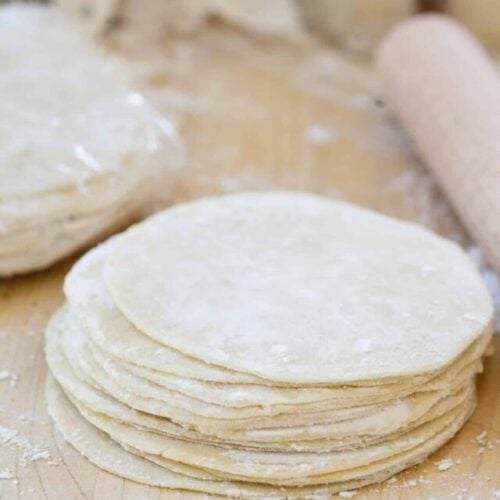

Instructions
For green dough
-
Blanch the spinach in boiling water. Puree in a food processor. Run it through a sieve, pressing with a spoon, to extract green juice, about 2/3 cup. Add water if needed. Heat it up in the microwave to about 170°F. Follow the same steps for the wrappers above.
Notes
- You can use cold water if you’re going to boil the dumplings. Cold water dough is more elastic and will be slightly harder to roll out.
- If stacking the wrappers for later use, dust each wrapper generously with cornstarch or potato starch. Flour won’t work because it’ll be absorbed into the wrappers.
This dumpling wrapper recipe had been included in my shrimp dumplings recipe. I moved it here as a separate post with more information and new photos. It really deserves its own spotlight.

